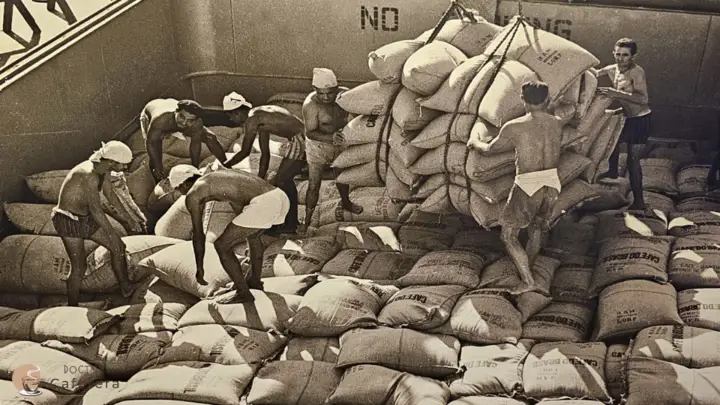Coffee, a beverage that has accompanied humanity for centuries, has undergone significant transformations throughout its history in what is commonly known as “coffee waves.”
The third-wave coffee is here to change how we perceive, consume, and value this beverage.
But what happened with the first two waves, and how does this third one emerge? In this article, I invite you to explore the evolution of coffee over time and how it has shaped our perception as the years go by.
The first wave-coffee: global expansion
In the 1960s, coffee witnessed an explosion in consumption, becoming accessible to everyone. Marking the first-wave coffee, this initial expansion brought the beverage into homes and establishments on a widespread basis.
Before this wave, coffee had a more limited presence, often restricted to select circles or specific regions.
With the arrival of the first wave, coffee became an integral part of people’s daily routines, offering an energizing stimulus and a taste experience that suited a variety of contexts.
The first wave also laid the foundation for the growth of the coffee industry.
As coffee consumption became widespread, the demand for coffee beans increased, which directly impacted coffee producers worldwide and led to the expansion of coffee production and trade in many regions.
The second-wave coffee: product quality
The second wave developed throughout the 1970s and 1980s when brands like Starbucks turned coffee into a luxury rather than a necessity. Additionally, awareness about the supply chain emerged from producers to consumers.
The second wave came with a focus on coffee quality.
At this point, consumers began to appreciate the diversity of flavors and aromas that different beans and preparation methods could offer.
Coffee beverages became expressions of taste and preference, and a barista’s ability to create a perfect cup of coffee became an appreciated art.
The third-wave coffee: value in the distribution chain
The third wave encompasses the entire distribution chain, from producers, importers, roasters, and baristas to consumers; all play vital roles in every cup. Coffee quality is elevated, direct trade expands, and sustainability becomes a fundamental pillar.
Profiles of milder roasts, innovative preparation techniques, and the pursuit of sweetness and complexity become hallmarks.
Here, the connection with coffee producers becomes more intimate and personal. Consumers know the story of their coffee and the hands that cultivated it. Direct relationships with producers, support for sustainable practices, and fair trade are values that resonate in this stage.
The experience of the third wave
Coffee becomes an experience in itself. While specialty beans are the content of this experience, the third wave is the medium through which this exceptional coffee is appreciated and shared.
The third wave places the consumer at the center of the experience, enriching their knowledge about the coffee they savor. Each cup involves planting, harvesting, roasting, and preparation.
This third wave raises a series of questions for each served cup. Where does the coffee come from? How was it grown and harvested? What bean variety is used? What is its roasting history?
At this point, coffee is an invitation to a deeper and more meaningful experience. It moves away from mere consumption and becomes an act of appreciation, a journey through the history and effort behind each sip.
Baristas: masters of the third-wave coffee
Baristas play a crucial role in the third-wave coffee. More than just serving coffee, they become masters of preparation. Each cup is crafted with meticulous attention to detail, from precise grinding to proper extraction.
Baristas become educators, sharing their knowledge about coffee origin, preparation, and culture with customers.
Preparation methods become an artistic expression, and baristas can tailor the preparation to individual tastes, creating personalized and memorable experiences.
The community of the third-wave coffee
This community brings together producers, roasters, baristas, and coffee enthusiasts in a social fabric that celebrates this ancient infusion’s quality, origin, and deep appreciation. Here, passion for coffee is a shared language; connection goes beyond a cup of coffee.
Coffee lovers gather through online platforms, events, and festivals to share their love for this beverage. This community allows for discussing preparation techniques, sharing tasting tips, and discovering new flavor profiles.
The coffee-drinking experience transforms into a shared and enriching experience.
Some coffee-focused events and festivals have become essential to the third-wave community. In these gatherings, attendees can taste various coffees, learn about the latest industry innovations, and connect with people who share their passion for coffee.
Cafes as spaces of experience
Cafes have transformed into spaces where the coffee experience is celebrated. Instead of merely being a place to buy a drink, they become destinations where consumers can immerse themselves in coffee culture, interact with passionate baristas, and enjoy a variety of preparation methods.
Sustainability and environmental awareness
Consumers and coffee professionals value sustainability in all supply chain stages, from production to preparation. This has led to the adoption of more responsible and environmentally friendly practices:
- Reducing environmental impact: Sustainable efforts also focus on reducing environmental impact at all supply chain stages. From production to preparation, the goal is to minimize waste and ecological footprint. This includes responsible water, energy, and waste management in coffee operations.
- Fairtrade and direct relationships: Direct relationships with coffee producers. These relationships also promote investment in local communities, contributing to economic and social development in coffee-growing regions.
- Traceability and transparency: Consumers can trace the origin of their coffee back to the specific farm where it was grown. This transparency ensures that coffee is produced ethically and sustainably.
- Education and awareness: Cafes and coffee professionals are crucial in educating customers about sustainable practices and their positive impact on communities and the environment.
- Investment in the coffee community: Social and economic development programs are implemented to improve the living conditions of producers and their families. This can include education projects, healthcare, and improvements in local infrastructure.




